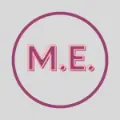
Ever since I watched the first Smile movie, that strange fear stayed with me for days. It was a kind of tension that I couldn't shake off, and with each lost glance, I felt like something was nearby, invisible, but there. When I heard about the sequel, my curiosity was immediate: what would become of this curse, now more cruel and spread throughout the world?
The first Smile movie brought a touch of originality to psychological horror. Of course, there were some scares, but what really captivated the audience was that anguish that accumulated in each scene. The curse itself was scary, but the film's construction and setting made the experience unique. As a fan of the genre, I couldn't expect anything less from the sequel, and Smile 2 definitely elevated the game. The horror is no longer trapped in a personal space, expanding to almost an epidemic, and the global reach of the curse brings a new layer to the story.
Imagine a curse that begins to affect not only ordinary people, but influencers, celebrities, people at the top of their fame. It was a masterful touch; after all, in times of social media, any secret becomes fuel for an audience. The film explores the dark side of being seen all the time, of having to maintain an impeccable image even when there is a “monster” consuming you. For me, this approach was a powerful insight. Instead of just focusing on the scares, Smile 2 messes with our perception of who we are in the spotlight and how much we sacrifice to keep up appearances.
And for those who love a good jump scare, Smile 2 does not disappoint. But what really struck me was the intensity of the psychological horror. Each scene is constructed with impeccable attention; the sounds, the distortions of reality, that feeling that at any moment something terrible is going to happen—everything contributes to leaving us on the edge. But that's not all: the film gives us deep characters, showing how much fame can corrode a person, with secrets that weigh more than any curse. In the end, it's as if the monsters are as internal as they are external, and that makes all the difference.
This time, the horror has a depth I didn't expect. In the first film, we had a protagonist desperately trying to escape the curse, but in Smile 2, the drama expands. With characters under the pressure of fame, the script explores how public exposure can intensify the psychological horror. I found myself reflecting on social media and how much we shape our image to others, but how much does it affect us? The film suggests that the more exposed we are, the more fragile we become. The curse here isn't just what you see, but what is hidden.
What really impressed me is how Smile 2 has no rush to resolve the tension, which makes the film even more engaging. Each scene is a build-up to something bigger, and that dense atmosphere is masterfully maintained. There are moments when I just couldn't look away, waiting for the next step. The jump scares have a purpose, the scary scenes bring layers, and you feel like there is something beyond than just “jumping out of your chair”. It is an experience that deepens and completes itself.
So to answer the question: is it the scariest movie of the year? For me, yes. It goes beyond a simple horror film, touching on the fears that hold us back, on how fame can be a dangerous territory, and our need to keep up appearances. It's a film that stays with you because it's not just scary—it's a mirror of our obsession with exposition.
At the end, Smile 2 asks us: are we prepared to deal with our own monsters when everyone is watching? For me, the film stands out not only for the fear it provokes, but for the way it transforms fame and psychological horror into something truly disturbing.








Share your thoughts!
Be the first to start the conversation.